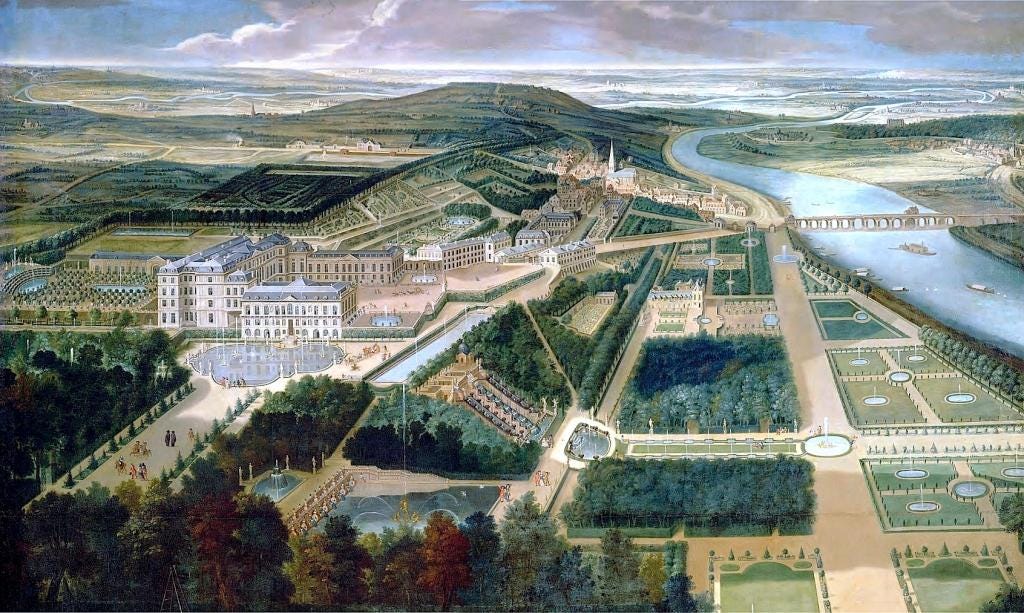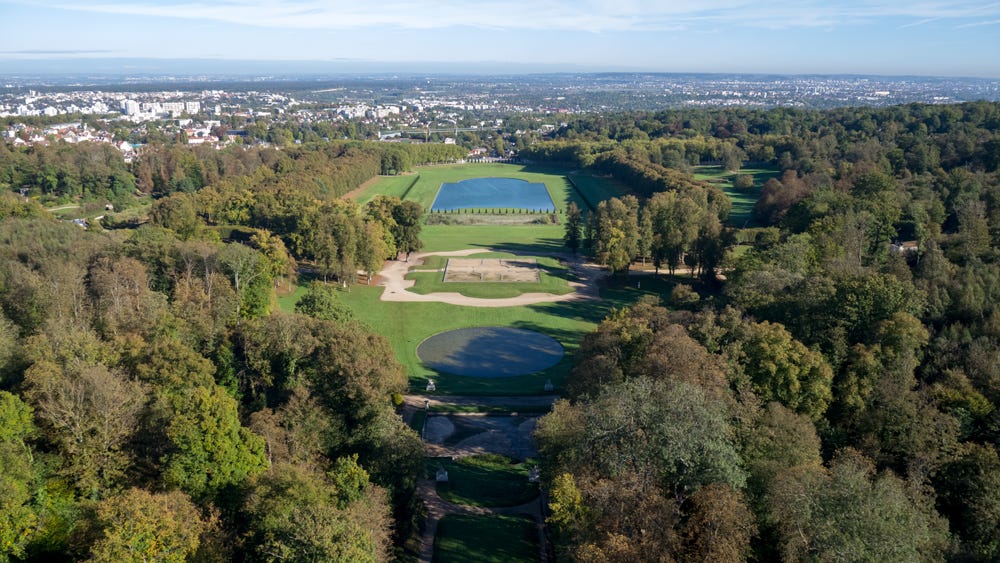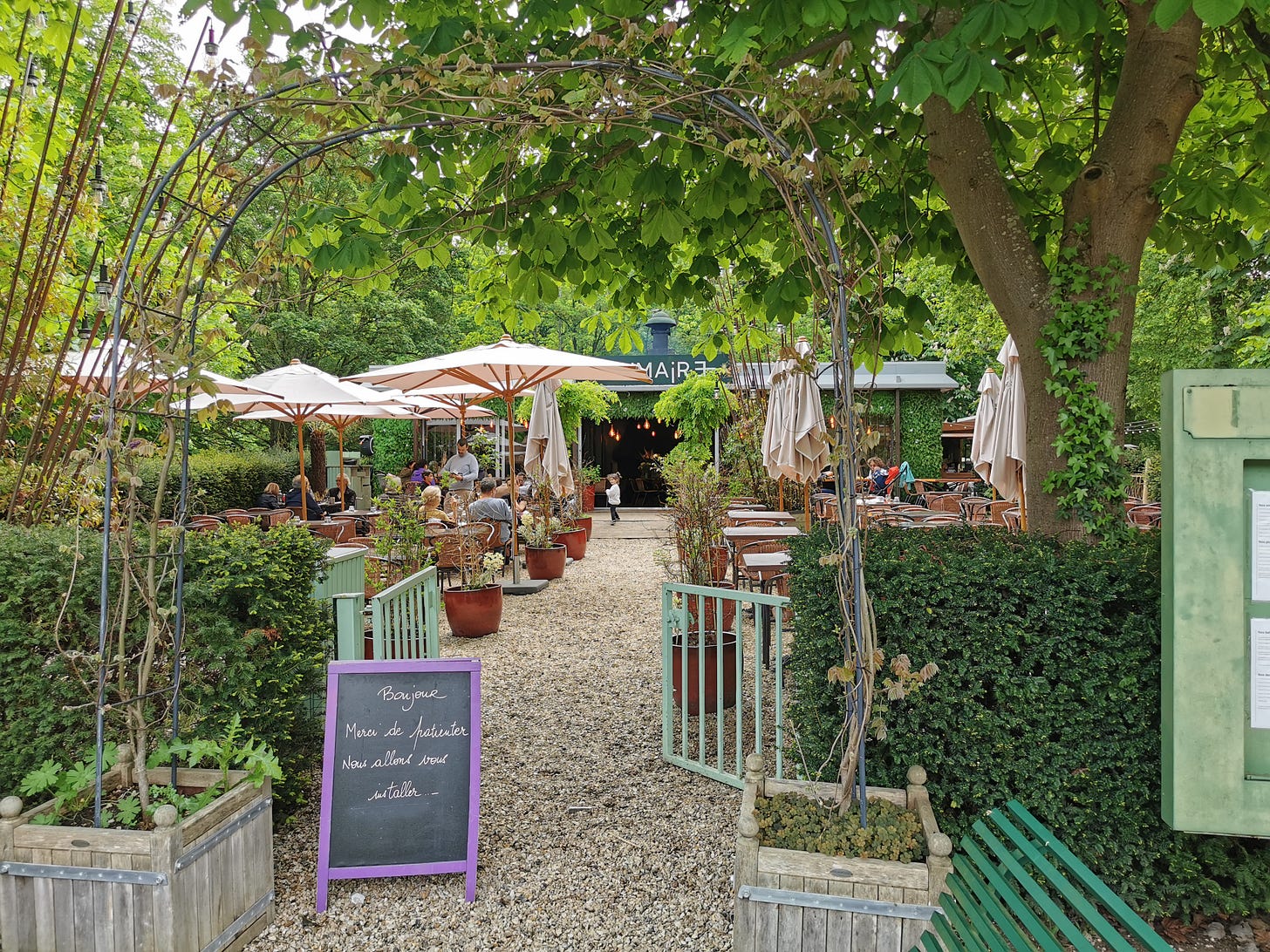Visiting The Overlooked Domaine National De Saint-Cloud
The historical hotspot near Paris you probably don't know.
Visitors often take for granted the existence of so many architectural wonders they see in France. The fact that they have endured for centuries, and are now often maintained in almost pristine condition seems like a given.
A combination of the French government, private associations, and even a national lottery, raise and spend millions of euros every year to protect and preserve the nation’s patrimoine. So much is spent that I have tried to get a calculation of the total amount dished out by this vast preservation machine and no one seems to have any idea. Except that it’s a lot.
It all feels so inevitable. Why wouldn’t a nation be proud of such works and do everything it can to ensure their vitality?
What’s less obvious is just how miraculous it is that so much does still exist. That existence is far more precarious than it would seem. To appreciate that, sometimes it’s helpful to visit a place where a once majestic château or cathedral has been erased.
Our family occasionally likes to go for walks about 15 minutes south of our apartment at the Domaine in Marly-le-roi. Back in the 17th century, King Louis XIV built a château and sprawling stables here as a little getaway north of Versailles and south of the château in Saint-Germain-en-Laye where he was born. A castle for every mood, I suppose.
But after the revolution, the structures were picked apart, bit by bit, by locals in need of metal and stones. We might fondly see an architectural and landscape masterpiece. But at the time, many looked upon this palace and just saw raw material for their fences or barns.
Today, there is only the barest hint of this history.
Saint-Cloud
On a recent weekend, my daughter and I visited the Domaine Nationale de Saint-Cloud. Perhaps real Parisians know about it, but still being relative newcomers to the North of France, I only stumbled across it randomly while looking for something else on the map.
Dropped into the sprawl west of Paris, there was this big green blob. So we decided to drive over and see what it is.
It turns out to be 1,110 acres of gardens and forest with a few historic buildings guarding the entrance, and perched on a plateau looking east across the Seine into Paris. It lacks greater notoriety, however, because the château that once dominated the land was destroyed (more on that below).
While it may not have the sex appeal of Versailles, we learned that far from being an obscure landmark, Saint-Cloud had long played a central role in some of the major events that marked the history of France.
The domaine’s story began in 1577 when wily Catherine de Médicis bought the Hôtel d'Aulnay on the plateau near the town of Saint-Cloud. As one does, she gave it to Jérôme de Gondi, an Italian banker from her hometown of Florence because he was extremely loyal to her. He began to construct a large house and gardens.
The late 16th century was the time of France’s big religious wars. King Henry III moved into Gondi’s shack as he prepared to liberate Paris from the extremist Catholic League. Instead, he was assassinated, and named as his successor a brother-in-law and distant cousin, Henry, the King of Navarre. The latter was a kingdom tucked between Southwest France and Northern Spain.
That turned out to be a big deal because Henry, who swung both ways on the Protestant-Catholic spectrum, eventually conquered France and became King Henry IV, the first of the House of Bourbon which was the dynasty that ruled France until the whole beheading episode. (Though they would make a brief comeback in the 19th century).
Fast-forward a couple of centuries, and the estate was expanded by a financial advisor to King Louis XIV and then eventually given to Louis’ brother, Philippe d'Orléans who oversaw the construction of a major château whose courtyard overlooked the Seine. The park grew to 988 acres, and he also built the Grande Cascade, which has managed to survive.

In 1785, Marie Antoinette took possession of the estate and continued to expand it (though she briefly considered scrapping the whole thing and starting from scratch).
Spoiler alert! Things did not go well for Marie and her hubby, King Louis XVI, and the château was briefly unoccupied.
But, a chippy fellow named Napoleon Bonaparte paid a visit to the orange groves (orangerie) at Saint-Cloud to plot the infamous Coup d'etat of 18 Brumaire where he overthrew the French government and established himself as dictator. It is considered the unofficial end to the revolution. It took the French a while to get a handle on the whole democracy thing.
The place had such fond memories for NB that he returned a few years later for the ceremony where he was appointed emperor in 1804. And that was such a kick that he came back 6 years later and married his 2nd wife there.
After Napolean, Saint-Cloud was kicked around a bit as France cycled through empires and then the restoration of the monarchy and then supplanting of the House of Bourbon with the House of Orléans and then another revolution and then the Second Empire. The 19th century was…tumultuous.
Those kings used Saint-Cloud as their summer home. And so did Prince Louis-Napoleon Bonaparte, nephew of Napoleon I. Like uncle, like nephew: the latest Bonaparte was elected president but then had himself declared emperor at Saint-Cloud: Napolean III.
Alas, Napolean got a little antsy and decided to declare war on Prussia, and in July 1870 he signed the war declaration at Saint-Cloud. Prussia pretty much routed the French, to the great surprise of the overly cocky French, and seized Saint-Cloud. French troops trying to retake Saint-Cloud, bombarded it and one of their bombs set off a fire that burned for a couple of days and devasted the chateau.
The ruins became a kind of pilgrimage site for wayward royals and artists. In 1891, the government had the ruins removed, a gesture intended to wipe clean some of the royal overtones.
It turns out, the Germans really had a whole thing about Saint Cloud. In World War II, the Wehrmacht occupied it, placed mines and barbed wire around it to secure the grounds, built watchtowers, and installed anti-aircraft batteries. They also turned a tunnel that had been built at the foot of the plateau into an arsenal for torpedos and mines. It would take years after the war for all of the barbed wire and concrete to be removed, and decades for the gardens and forest to be rehabilitated.
Subsequent planning decisions haven’t helped. Cars can drive through much of the park, with the toll that is charged being one of the principal sources of revenue to maintain the domaine. Another major road runs under the center of the grounds, and a local train runs along one side. Some of the land was also carved out to build sports areas for local schools, and other parts are rented out to private associations.
In 2013, the French government produced a scathing report describing Saint-Cloud as being in a state of crisis with no coherent plan for its development and a staff that was miserable due to poor working conditions.
Still Standing
All of this may leave one with the impression that there is nothing much to see at Saint-Cloud. But despite the rough recent history, it has retained a degree of splendor. Starting near the entrance, there are some wonderful views of Paris.
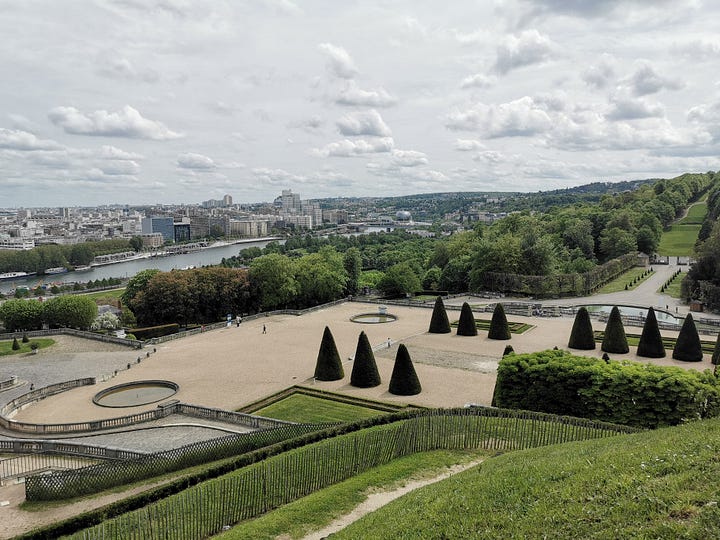
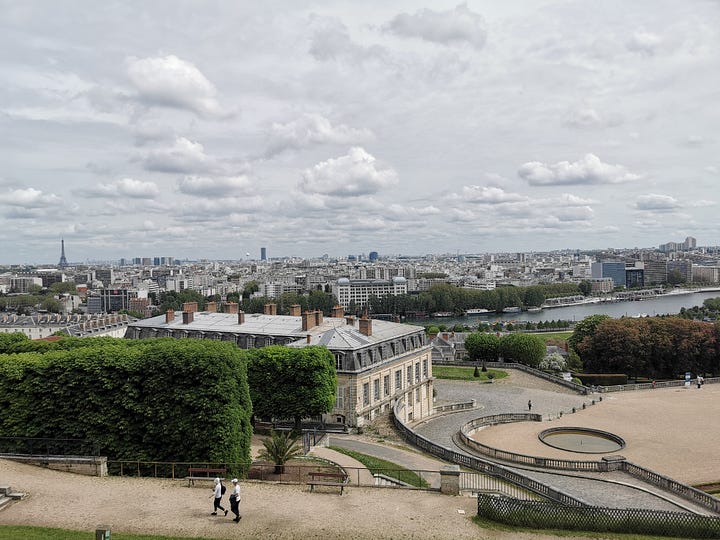
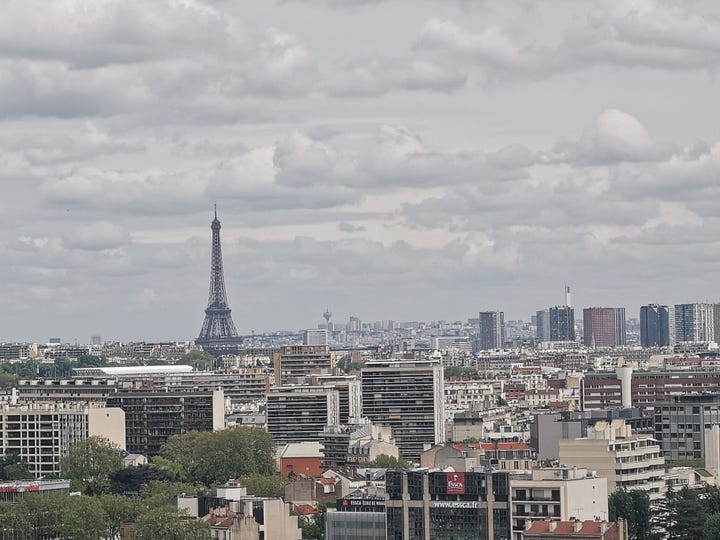
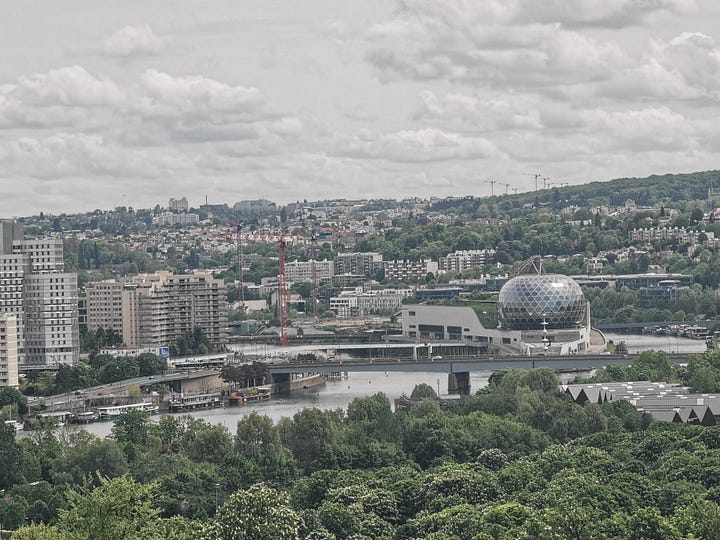
There is a museum and the vast grounds and gardens offer numerous walks so you can be immersed in nature. We walked for 90 minutes and only covered a small piece of it. There is also a bike rental station.
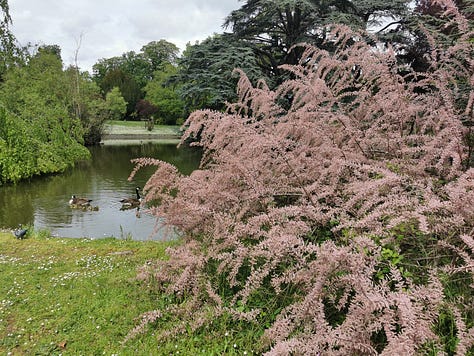

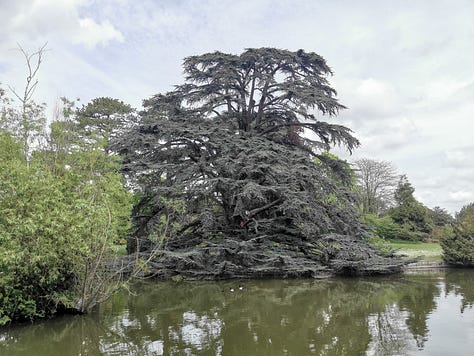
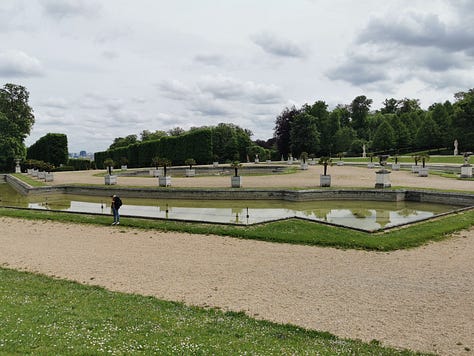
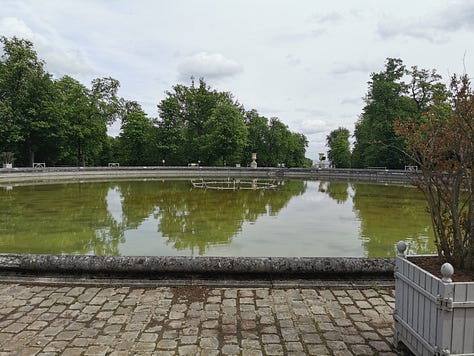
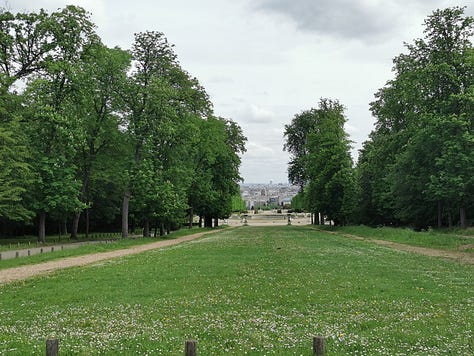
As mentioned above, the ornamental Cascade is still there, but it’s also starting a four-year, €10 million renovation. So the water has been shut off for the foreseeable future.
Perhaps the other thing of note is that there are 6 restaurants on the grounds.
We ate at the L’Orangerie, which I presume is an hommage to Napolean. There is the fancy, sit-down side which serves +€25 plates like entrecôte and octopus. We just grabbed a couple of paninis and drinks from a takeaway stand, because we are basic like that.
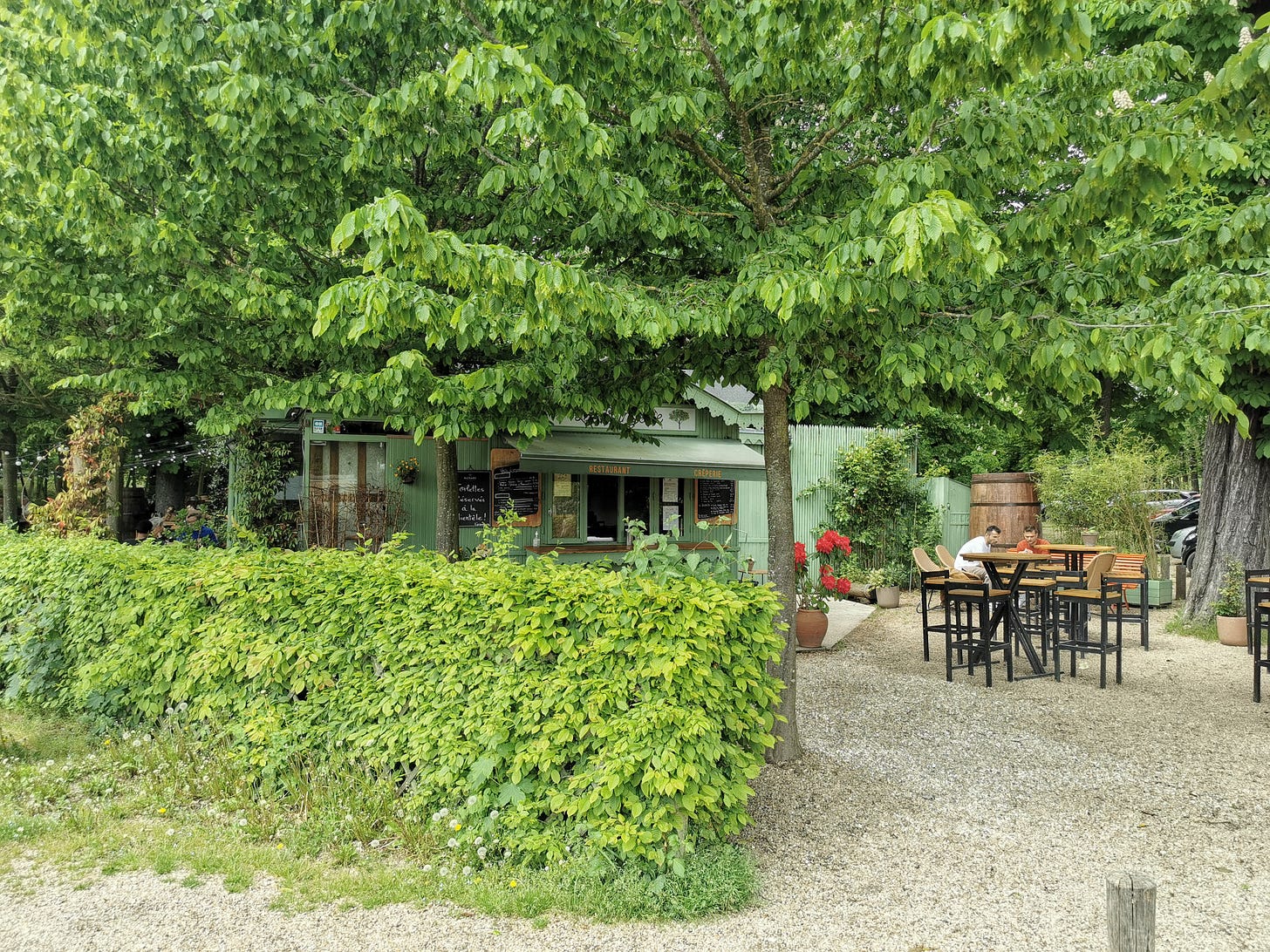
Of course, the past is never dead in France, and there are still people who dream of seeing the Saint-Cloud Château rebuilt one day. The private association Reconstruisons Saint-Cloud is raising money to do just that. Estimated cost? €185 million.
And then there is this historian who has spent more than 10 years re-creating the château in virtual reality. If that doesn’t get you psyched for the metaverse, well, then…
For now, Saint-Cloud is still a great detour from the typical Paris tourist destinations. A sprawling royal park that offers an escape from urban life while doubling as a fancy French food court. We’ll be back to sample the other restaurants and walk the paths.
Chris O’Brien
Le Pecq


